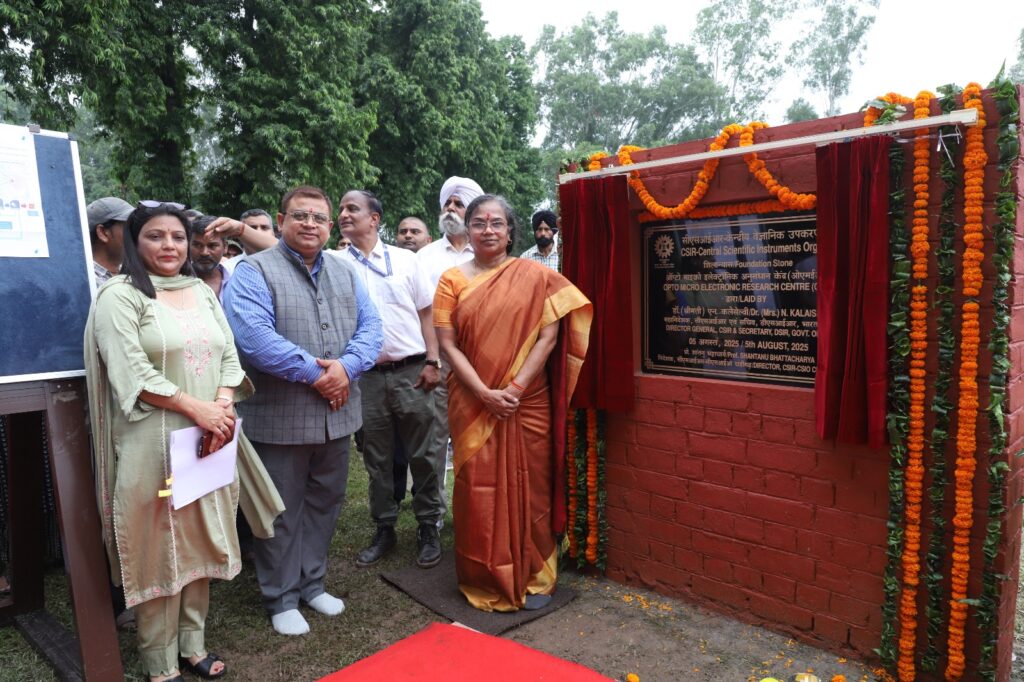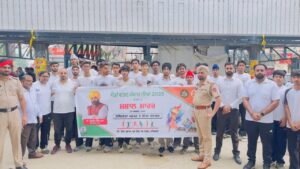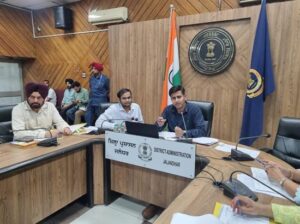The Fact News Service
Chandigarh, August 5
CSIR-Central Scientific Instruments Organisation (CSIO), Chandigarh—a premier national laboratory under the Council of Scientific and Industrial Research (CSIR)—is pleased to announce the foundation ceremony of the upcoming Opto Microelectronics Research Center for Next Generation Semiconductor Devices and Technologies.
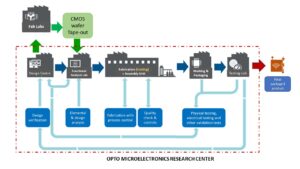
The foundation stone was laid by Dr. (Mrs.) N. Kalaiselvi, Director General, CSIR and Secretary, Department of Scientific and Industrial Research (DSIR) on Tuesday.
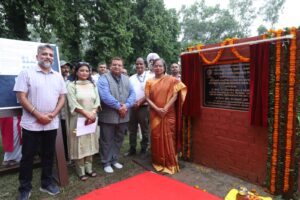
This state-of-the-art ATMP facility, developed under the leadership of Prof. Shantanu Bhattacharya, Director, CSIR-CSIO, is envisioned as a key enabler of the India Semiconductor Mission (ISM). It aims to bolster India’s capability in semiconductor design, packaging, and limited-scale production—supporting critical applications across defence, healthcare, telecommunications, and automotive sectors. The initiative aligns with national priorities under “Make in India” and “Atmanirbhar Bharat”.
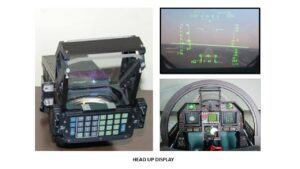
On this occasion, three indigenously developed and industry-ready technologies by CSIR-CSIO will also be unveiled under CSIR Technology Transfer Commitments – 2030 (TTC-2030)
1. Head-Up Display (HUD) – Continuing the legacy of the LCA Tejas HUD Mk-I, this indigenous technology has evolved into advanced variants for frontline platforms such as HJT-36, Hawk I-132, and SU-30 Mk-I, with development underway for futuristic HUD Mk-II. These systems project critical flight and mission data directly into the pilot’s line of sight, enhancing combat efficiency, operational safety, and mission success. The indigenous HUD program marks a major stride in self-reliant avionics and significantly contributes to national defence preparedness and technological sovereignty.
2. Additive Manufactured Orthopaedic Implants – These state-of-the-art, additively manufactured implants represent a landmark in the indigenisation of advanced medical technologies. Developed using metal 3D printing techniques, they offer customisation tailored to the anatomical needs of patients, the capability of making Lattice structured implants,enables better clinical outcomes and post-operative recovery. Designed for complex trauma and reconstructive surgeries, these implants match international standards in performance while maintaining a high degree of affordability, making them suitable for wide-scale adoption in India’s public and private healthcare sectors. By offering a robust alternative to costly imported implants, this innovation supports import substitution and enhances the accessibility of world-class orthopedic solutions within the country. This technology marks a transformative step in the creation of a self-reliant, technology-driven healthcare infrastructure for India.
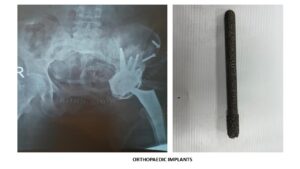
3. Dialysis Machine – An affordable, indigenously developed dialysis system tailored to meet the unique requirements of Indian healthcare settings. Unlike many imported machines that struggle with India’s diverse operating conditions—such as variable power quality, water constraints, and limited infrastructure—this robust machine is engineered to deliver consistent performance across rural and urban environments. Most importantly, it offers the ability to customize dialysis parameters as per Indian patients’ clinical profiles, dietary habits, and physiological responses, making it highly suitable for localized patient care and resource-sensitive deployment.



